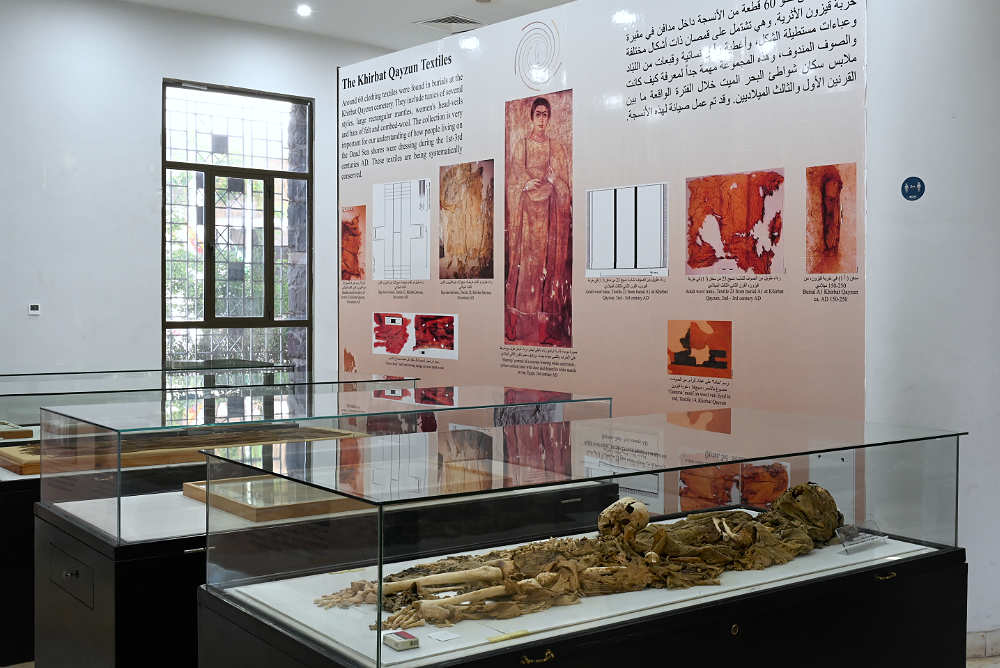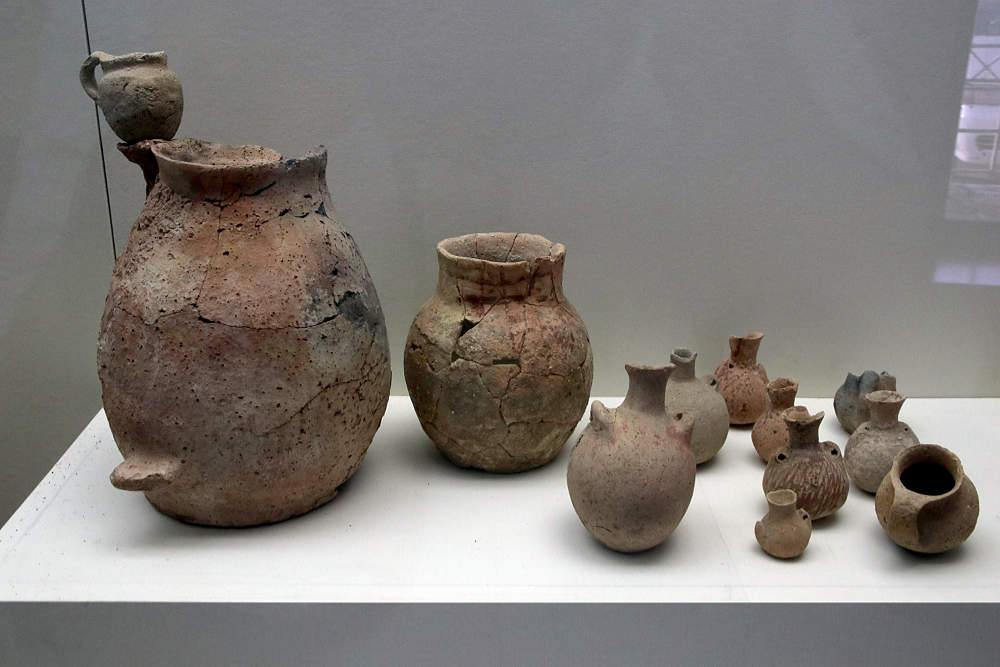- ENDEES
- UiU - Home
- Art Destination Jordan
- AD Jordan
- HIGHLIGHTS
- THEMES
- ITINERARIES
- Travel tips & information
- Free Newsletter
- UiU - Sections
- Free Newsletter
For an optimal view of our website, please rotate your tablet horizontally.
Officially opened in May 2012, the museum is the culmination of a decades-long archaeological and heritage work at the Southern Ghor area of the Dead Sea, reflecting a close relationship and cooperation between archaeologists and local stakeholders and communities. The idea was originated by the Department of Antiquities and Dr Konstantinos D. Politis while directing archaeological excavations of the Sanctuary of Lot at Deir 'Ain 'Abata in the mid-1990s.


Located north of the modern town of as-Safi, it was first referred to as "Lot’s Museum," to stress its connection and proximity to the Sanctuary. At the beginning, it hosted the archaeological remains set to be restored and sheltered after excavations, so that the early Christian monastic complex built around Lot's Cave could become visitable by tourists and pilgrims. However the museum's broader focus on the southeastern shores of the Dead Sea and the various peoples who have lived in and traveled along it for over 10,000 years, determined its final name derived from its location: The Museum at the Lowest Place on Earth.
Situated approximately 405 m below sea level, the museum encompasses an area of about 2,000 x 500 m. Its architectural form was inspired by fossil Ammonite shells found in the area. The final design was commissioned to the Jordanian architect George Hakim.

Main exhibition hall
The MuLPE has a central exhibition hall and a smaller one for educational programs and periodical exhibitions. The main exhibition was originally designed by the Hellenic Society for Near Eastern Studies. The displays and information panels present exhibits from the prehistory to the present, based on scientific interpretations of archaeological findings by foreign and Jordanian experts, as well as people's experiences, memories, and individual stories by community members. Thematic units include the geography and geomorphology of the area, as well as chapters such as: First People; First Cities; Nabataeans on the Dead Sea Shores; The Story of Lot; A Monk’s Life, Hellenism and Islam; The Story of Sugar; On-going Excavations; Mosaic-Making and Conservation; Rescued Antiquities; Ancient Technologies; Life in the Dead Sea today; Modern Safi.

Nabataean exhibits of the cemetery at Khirbet Qazone, which include well preserved textiles, and a Nabataean mummified body. Excavations were directed by Dr Konstantinos D. Politis
The museum's facilities and spaces include a small library and archive, a multimedia room, a cafe, a museum shop run by a local women business called ‘Safi Crafts’, a conservation laboratory, storage rooms for archaeological finds, a courtyard and garden.
The MuLPE also acts as the excavation house for archaeological projects in the sites of the area offering MuLPE’s hostel facilities (kitchen, common room, and six spacious double bedrooms).
The MuLPE is in charge of in situ preservation, conservation, storage, research, and exhibition services for the archaeological sites Ghor as-Safi:
The MuLPE is in charge of in situ preservation, conservation, storage, research, and exhibition services for the archaeological sites Ghor as-Safi:

Bronze Age pottery vessels found in the lowest levels of Lot's Cave, some of which must have been seen at the site by early Christians who would have associated them with the Old Testament story of Lot and therefore considered them holy. From Deir 'Ain 'Abata, 3rd millennium BC.

From left to right: Gravestone with Nabataean inscription, Nabataean betyl with nefesh (1st - 2nd cent. AD). Gravestone with Nabataean aniconic representation of the God Dushara (1st - 2nd cent. AD). Gravestone with Greek inscription in tabula ansata (1st – 3rd cent. AD). Nabataean pottery fragments (1st - 2nd cent. AD)

Detail from a mosaic floor, Church of St. Lot, 5th/6th cent. AD

Game board inscribed on a sandstone block. It is composed of two major sections with twelve vertical lines. A Greek inscription reads “Lord, grant the person who wrote (this) two throws of the dice”. From Ghor as-Safi, 5th - 6th century AD.

Copper cauldron for sugar processing (12th century)
© Summary and photos: Universes in Universe.
Source, among others: Georgios Papaioannou: Site museums and archaeology. In: The Oxford Handbook of Museum Archaeology. Alice Stevenson (ed.), Oxford University Press 2022.
Museum at the Lowest Place on Earth
Ghor as-Safi
Al-Āghwār al-Janūbī district
Karak governorate, Jordan
Website
© Texts and photos are protected by copyright.
Compilation of information, editing, translations, photos: Universes in Universe, unless otherwise indicated

A betyl (Semitic: bait-el = house of God; Greek: baitylos) is an aniconical God symbol, usually in the form of a vertical rectangular plate or stele. It can also be a negative form in a niche. Often there are several betyls in a niche next to each other, on top of each other or grouped together. "The betyl is not a representation of the God, neither an image of the God, nor an idol. As a medium of the presence of the God, however, it can also experience cultic veneration. This in turn means that in the act of worship, one could offer sacrifices and gifts to the betyl." (R. Wenning, 2007. Transl. UiU)
Freestanding stone pillars shaped like an obeliskoid pilaster or a pointed cone, or in bas-relief or graffito, roughly carved or engraved into rock-faces, often with a blossom/pinecone or a stylized crown at the top. Many nefeshes are set upon a base, where the name of the dead person is given. Often various nefeshes are grouped together. The Semitic word "npš" means “life,” “person,” or “soul.” It denotes a dead person and is used in this sense for a memorial marker.
Examples: Obelisk Tomb (Bab as-Siq); Obelisks (Jabal al-Madhbah); Tomb BD 825 (see details)